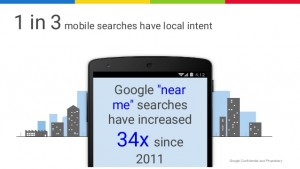
With more employees working virtually, feedback and coaching interactions between managers and employees are increasingly taking place via email, video tools and apps. General Electric, for instance, recently started a pilot project that uses a smartphone application to give employees instant feedback from their bosses and colleagues. Managers can tap on an app and give brief notes of encouragement, advice or criticism immediately following a meeting or presentation.
As convenient as it may be to use this app and others like it, relying too heavily on technology tools can violate proven best practices for providing effective coaching and feedback.
Coaching is a critical management competency whether direct reports are co-located or geographically distributed, but it can be even more difficult to effectively coach from a distance.
While frequent and timely feedback is an important aspect of employee development and technology can make it easier for virtual leaders to connect with direct reports wherever they are located, it‘s not enough to ensure the coaching interventions will be meaningful.
Here are three ways virtual leaders can enhance their ability to coach from a distance and avoid the unintended negative impact technology can have on coaching best practices.
Set the Foundation for Coaching Virtually
Effective coaching starts by building a relationship based on mutual trust between managers and employees. If that hasn’t been established, attempts to coach an employee will fall on deaf ears.
Keep the line of communication open by reaching out to employees for informal and spontaneous conversations. Check in on their workload, ask for updates on the status of a project and take the opportunity to offer praise when it’s warranted. Don’t forget to take time to talk about matters that aren’t work-related, too.
Virtual teams don’t have the same opportunities for the natural conversation that takes place over coffee or lunch, so leaders need to find ways to replicate these co-located interactions online.
Technology can facilitate interactions between dispersed employees and virtual leaders. The many virtual tools available to teams today make it easier to use different ways of communicating, depending on the goal. Don’t rely on email to deliver concerns or criticism. Reach out over the phone or via video chat. Other chat tools, such as Google Hangouts, make it easier to have informal conversations or to give recognition and encouragement.
Apply Best Practices for Virtual Coaching
Although the tenants of effective coaching are similar whether your team is co-located or spread across the globe, it’s important to recognize that virtual coaching has some unique characteristics that require leaders to adjust their behavior and leverage technology in order to be effective. Some of the ways virtual coaching is different include:
- Due to the lack of visual cues, active listening skills become even more essential
- Fewer opportunities to “observe” performance
- Even more feedback is needed, yet fewer opportunities to deliver it in a timely manner
- Coaching people who don’t report directly to you tends to be more common
- Some communication channels might distort the tone or understanding of your message
In order to deal with these differences, effective virtual leaders follow five best practices for virtual coaching:
- Establish formal processes to monitor individual and team performance
- Periodically work flexible hours so you can be available when team members are working
- Find a mentor/partner at employee’s location who can be a resource
- Make regular and impromptu contact with team members
- When coaching, face-to-face is best, then video and then the phone – use email to summarize conversations
Coaching sessions should be consultative, not one-way conversations. Although the periodic use of an app to provide recognition or “on-the-spot” feedback can be very effective, the overreliance on this type of tool can have a negative effect on the person receiving the feedback. Instant feedback using a smart phone application does not allow direct reports to respond or allow leaders to ask employees what they need to work more effectively and develop their skills, and make that part of the action plan.
Establish Formal Processes for Virtual Coaching
The annual review certainly shouldn’t be the only time employees hear from a manager about what they’re doing well and how they need to improve. Effective virtual leaders understand they must be much more deliberate and intentional about connecting with direct reports than when they are co-located.
Virtual managers should schedule meetings at key project milestones to discuss progress, provide recognition, and coach for improved performance. The use of video and collaborative software helps overcome the lack of visual cues and enhances the quality of these interactions. Best-in-class virtual leaders also set aside time for shorter, one-on-one meetings to talk about quarterly goals and opportunities for growth.
Managers can also seek regular input from the employee’s colleagues and direct reports for a more complete picture of the employee’s performance. This information is valuable to an employee’s growth, but it’s most constructive when given within a conversation where employees have the opportunity to get clarification and ask questions.
Apps that allow managers and colleagues to “ping” employees with instant feedback could be a step in the right direction when used to supplement ongoing conversations, but they don’t go far enough on their own. Without the ability for employees to respond, this well-intended feedback loses a great deal of context.
Our virtual team study on the success factors of top-performing teams found that although technology is an important enabler, it was not a differentiator of team effectiveness.
The use of technology contributes to effective team interaction and individual effectiveness as long as it is coupled with effective behavior.
Applying proven coaching and feedback best practices such as having a two-way conversation, providing balanced feedback with examples, and making eye contact is still important when coaching in a virtual world – maybe even more important due to the unique nature of virtual work.
OnPoint Consulting, an organizational consulting firm, offers assessment and training solutions for virtual leaders. We have a number of cost-effective e-learning sessions virtual leaders can take at their own pace, including a session on coaching from a distance.
Business & Finance Articles on Business 2 Community
(176)
Report Post




